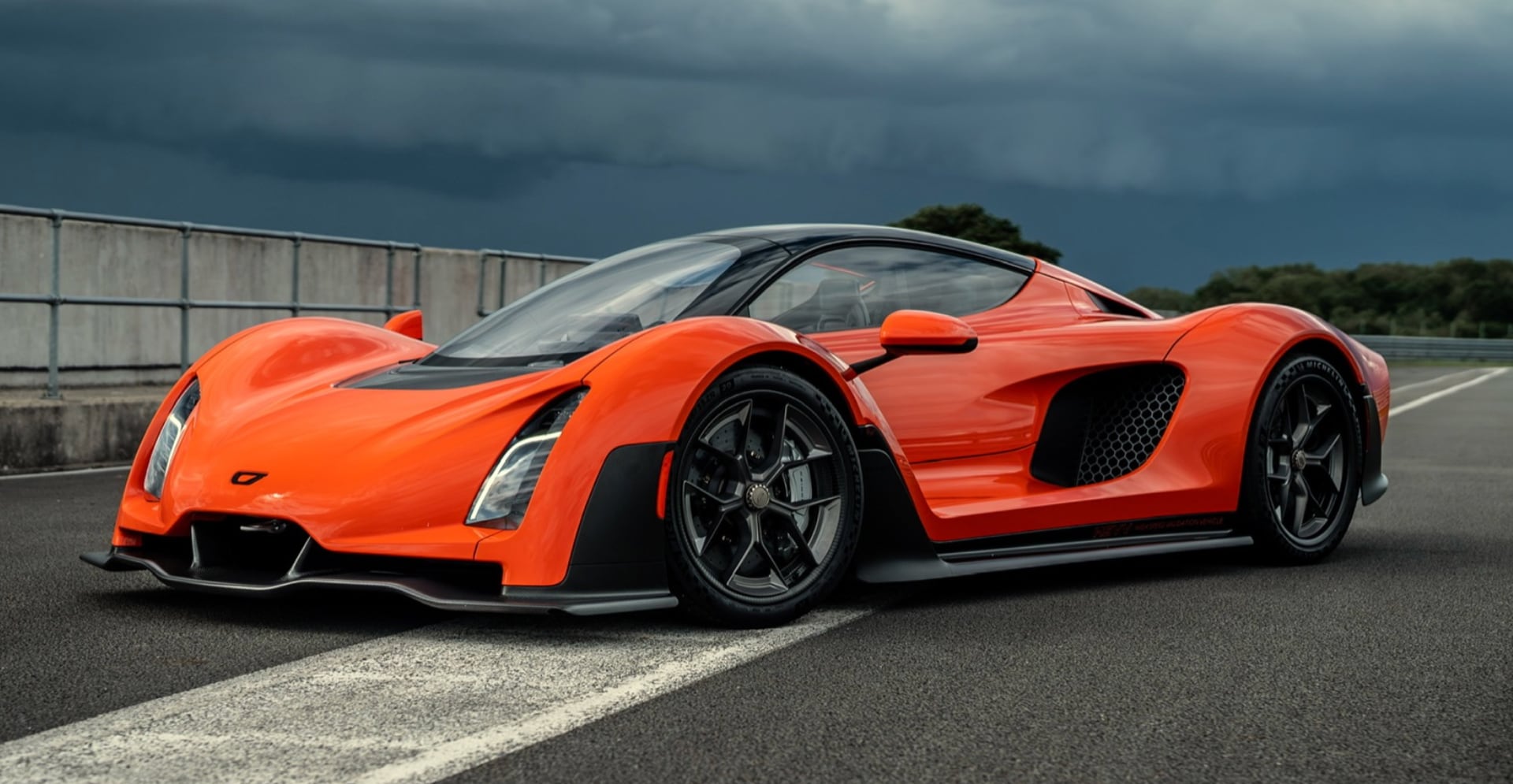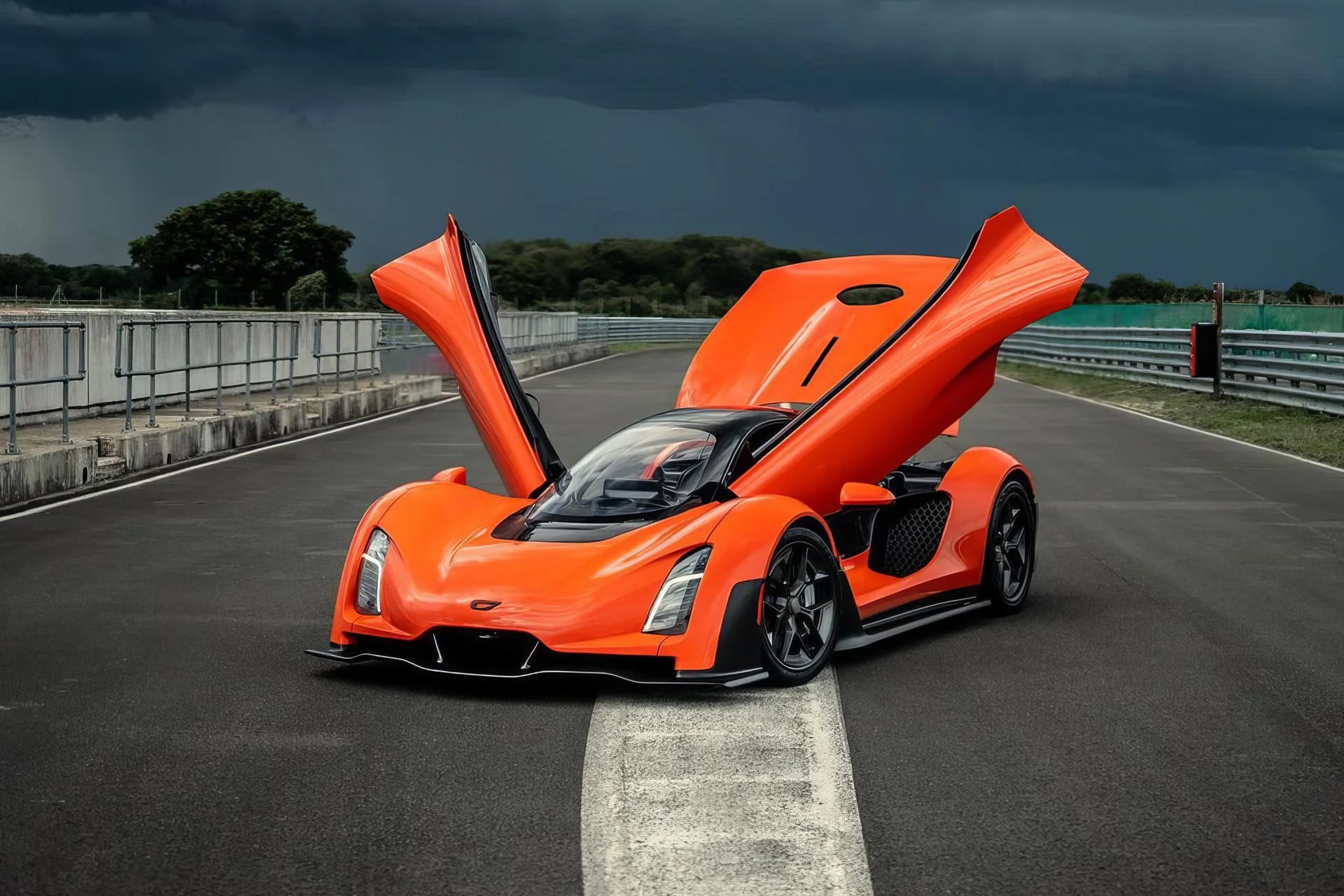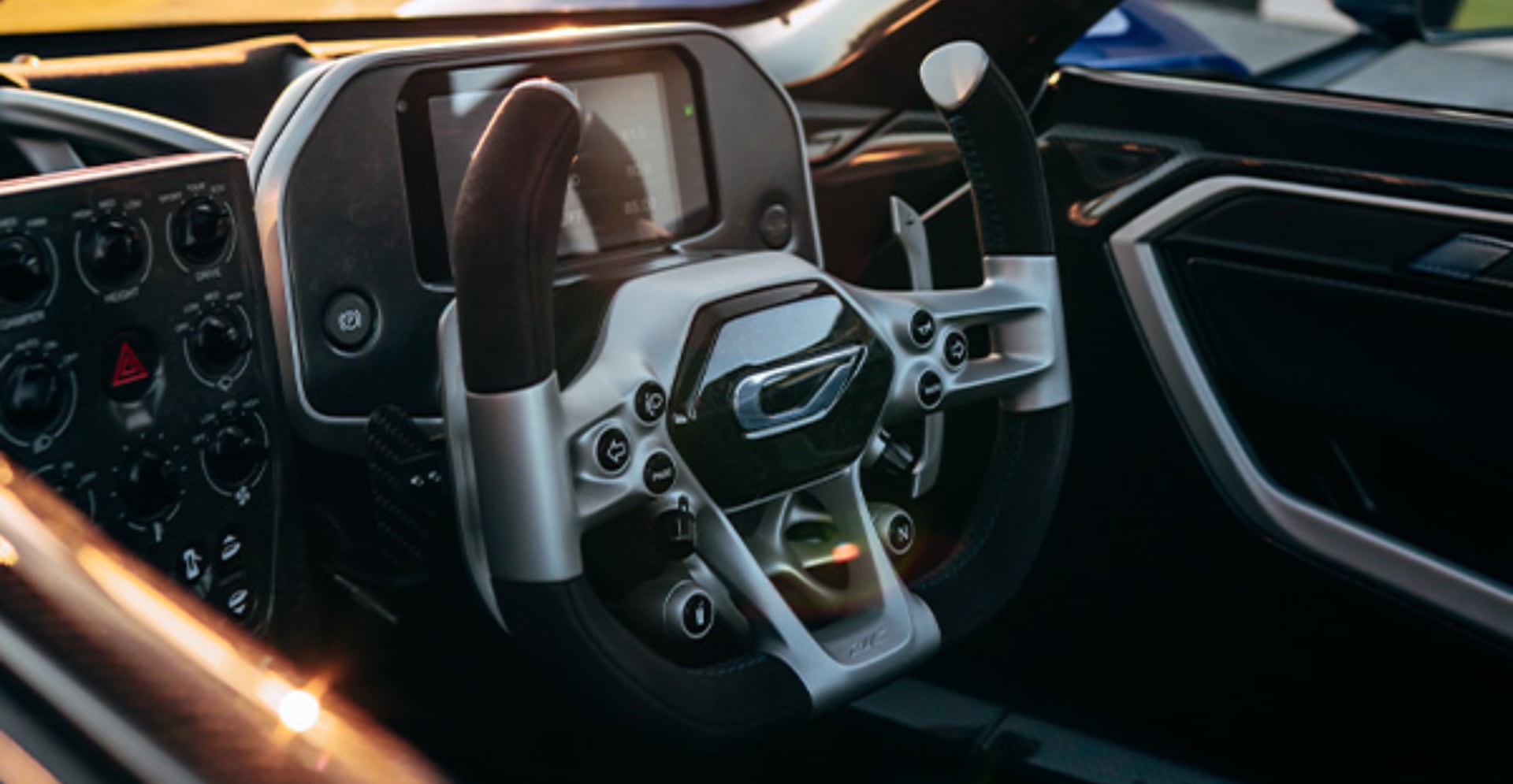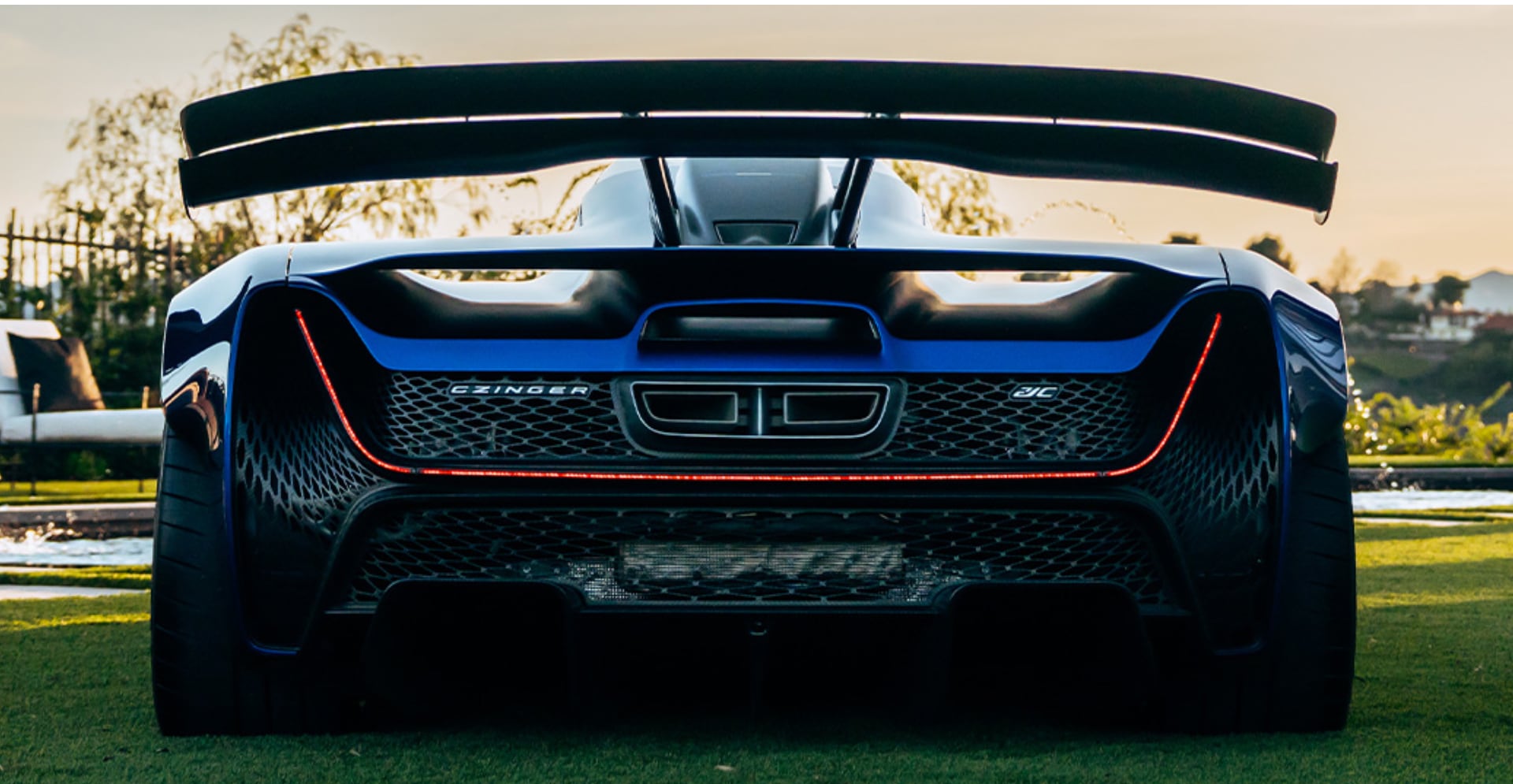
You’re pulling into a gas station in a $2.36 million hypercar. The pump attendant is staring because you just popped what looks like the hood to fill up. Meanwhile, your doors are swinging three feet above the roofline. Everyone is watching. That’s life with the Czinger 21C V Max, a California-built machine that makes you feel like a fighter pilot instead of a regular driver.

Kevin Czinger used to make electric cars at a company called Coda. That didn’t work out. So he started Divergent Technologies and spent years building 3D printing tech for aerospace and defense. Then someone asked: what if we used the same stuff to build a car? The Czinger 21C is the answer.
The Passenger Sits Behind You (Yes, Really)
The seating is wild. Your passenger doesn’t sit next to you. They sit behind you, like Goose and Maverick in Top Gun. The setup hasn’t been done in cars at this price point, well, ever. And it’s not cramped back there because your passenger’s legs wrap around your seat.
Getting in takes practice. Those huge side panels? They hold the battery pack, which is why they’re thick enough to sit on. You plant yourself on the panel, swing both legs in at once, duck your head like you’re boarding a helicopter, and slide down into the seat. First time? You’ll look awkward. After a few tries? You’ll feel like a pro.

Once you’re in that center seat, everything changes. The windshield wraps around you. The front fenders are right there in your view. No rearview mirror because you’d just be looking at your passenger. Your whole world is that view forward.
The car has 1,250 horsepower from a twin-turbo V-8 (750 hp) plus two electric motors up front (268 hp each). It weighs 3,668 pounds, which is lighter than the Aston Martin Valhalla or Ferrari SF90. The V Max version ditches the big rear wing for smoother bodywork and a claimed 253 mph top speed.
3D Printing Tech That’s Actually Cool
Walk around this thing and you’ll see parts that look like bones instead of car parts. That’s on purpose. Czinger calls it “Bio-Logic” – using AI to design each piece with the least material possible while staying strong enough. The computer runs thousands of tests until it finds the perfect shape. That’s why the suspension looks like it grew instead of being built.

About 617 pounds of the car is made from these 3D-printed aluminum parts. The printing is so detailed it can make features the width of a human hair. Divergent had to invent their own aluminum mix because regular stuff either melted wrong or broke too easily.
Here’s the weird part: this $2.36 million hypercar is street legal in all 50 states. The owner’s manual is seriously thick. And the tandem seating means you could technically put a child seat behind you. Because apparently someone might need to do the school run in a 1,250-horsepower beast that tops out at 253 mph.

Oh, and it has Apple CarPlay. Even when you’re breaking lap records at five California tracks (which they did, five days in a row), you still need your podcasts.
Only 80 will be made across all three variants. Options like visible carbon fiber cost another $230,000. Carbon wheels? Add $40,250. There’s even custom luggage designed to fit the unique storage compartments.
Why It Matters
This isn’t just a toy for rich people who already have a Bugatti. Czinger’s 3D printing tech is being used by Aston Martin, Bugatti, and McLaren. The company says printing costs have dropped 25 times in seven years. They need another five-fold drop before it makes sense for regular cars, but they’re getting there.

So yes, the Czinger is a $2.36 million flex. But it’s also showing how cars might be made in ten years – designed by AI, printed overnight, no waiting for tooling. In a world full of boring crossovers, this is proof that some people still want to build completely insane vehicles.
The Numbers:
- Price: $2.36M base ($2.7-2.8M with options)
- Power: 1,250 hp
- Weight: 3,668 lbs
- Top Speed: 253 mph
- Production: 80 units
- Special feature: Child seat anchors (seriously)


![[Strong Magnetic Lock]:Built-in magnets, offering a magnetic force of up to 3000g. Ensures the magnetic wallet fits tightly and attaches securely to the back of your iPhone. [Smart Card Storage]:The magnetic wallet is designed ingeniously to hold 5 c...](https://m.media-amazon.com/images/I/41i8zbilqXL._SL160_.jpg)